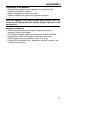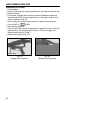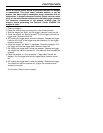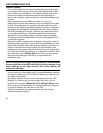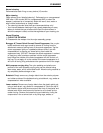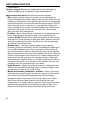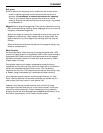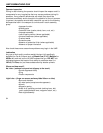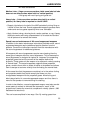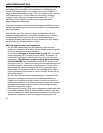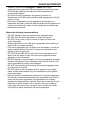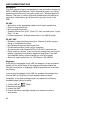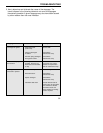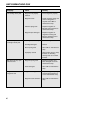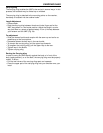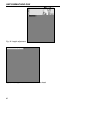
35
LUBRICATION
• All metal accessories
Medium Lube – (finger run across surface yields some lube but lube
does not run down surface when held in a vertical position)
• Bolt group with recoil spring and guide rod
Heavy Lube – (Lube runs down surface when held in a vertical
position) No heavy lube is required on the HK UMP!
• Reapply lubrication to the bolt of the UMP periodically during firing as
it burns off from the heat. Sound suppressed weapons generate more
smoke and noxious gases especially when over lubricated.
• Apply lubricant using a shaving brush, swabs, patches, or rag. A spray
bottle also works well using compressed air to circulate the lubricant
into all parts and to remove the excess.
Special use and maintenance of HK sound suppressed weapons
In addition to the basic maintenance instructions provided earlier, sound
suppressed weapons require additional special attention from the
operator. Consult the instructions received from the manufacturer with
the sound suppressor for additional guidance.
All weapons with sound suppressors require more cleaning than the
same type of weapon without a sound suppressor. This is because the
sound suppressor is designed to capture or “suppress” the expanding
propellant gases that exit the muzzle of the weapon behind the
projectile. These gases exit the weapon at a supersonic velocity causing
a “muzzle blast”. The sound suppressor captures these propellant
gases, contains them within a series of baffles or chambers and allows
them to escape at a slower velocity thus eliminating the muzzle blast.
At the same time that the gases are contained, so is the carbon fouling
and propellant debris that would normally be blown out of an
unsuppressed weapon with the propellant gases. More fouling and
debris stays behind in a sound suppressed weapon and thus there is
more for the operator to remove during his cleaning.
In order to be effective, a sound suppressed weapon must also provide
some means to reduce or eliminate the supersonic “crack“ of the
projectile as it leaves the muzzle at a supersonic velocity (above 1,088
feet/second at sea level).
This can be accomplished in two ways. One. By venting gases from



